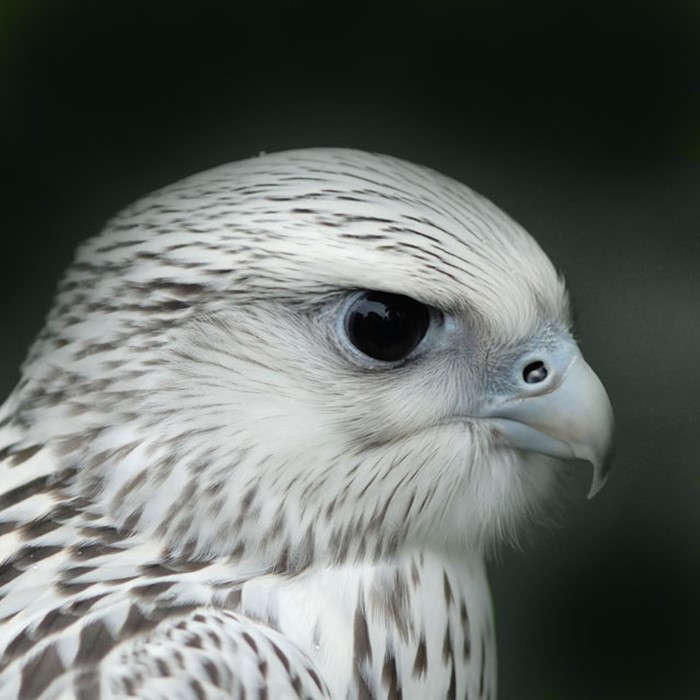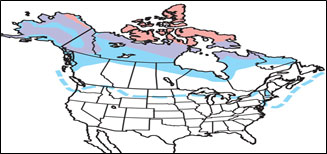
Gyrfalcon
"Puddle"
The Gyrfalcon is a transient visitor to Britain with only a few sightings every year. The record for the highest number of sightings dates back to 1909 when 27 were spotted across Britain and Ireland.
Puddle is a little character. He hatched in 2018 and it was very warm so he spent most of his time finding lots of water to get into to cool down. He also became quite a good at goalkeeping!
GYRFALCON FACTS
Falco rusticolus
TERRITORY/LOCATION
The Gyrfalcon thrives in some of the harshest climates on Earth. This denizen of the mountains and high arctic tundra is a circumpolar species, found throughout the region of the North Pole. It nests in the arctic and subarctic regions of North America, Europe, Asia, Greenland, and Iceland.
HABITAT
Gyrfalcons breed on arctic tundra. When they come south for winter, they look for similar habitat: open fields, coastlines, dunes, prairie, and shrubsteppe.
CONSERVATION STATUS
Least Concern

DIET
But it preys on many other bird species, including sage-grouse, jaegers, gulls, terns, fulmars, auks, pheasants, hawks, owls, ravens, and songbirds. It can also hunt mammals as big as hares.
SIZE/WEIGHT
48 - 65 cm long, weigh 805 - 2100 g and have a wingspan from 110 to 160 cm. Females are bulkier and larger than males.
NESTING
It breeds on Arctic coasts and tundra, and the islands of northern North America, Europe, and Asia. It is mainly a resident there also, but some gyrfalcons disperse more widely after the breeding season, or in winter, laying 1-5 eggs.
LIFE EXPECTANCY
13 years old average age in the wild
20 years old in captivity
SCIENTIFIC
CLASSIFICATION
KINGDOM
Animalia
PHYLUM
Chordata
CLASS
Aves
ORDER
Falconiformes
FAMILY
Falconidae
GENUS
Falco
SPECIES
F. columbarius
DID YOU KNOW?
The gyrfalcon was originally thought to be a bird of tundra and mountains only; however, in June 2011, it was revealed to spend considerable periods during the winter on sea ice far from land.
